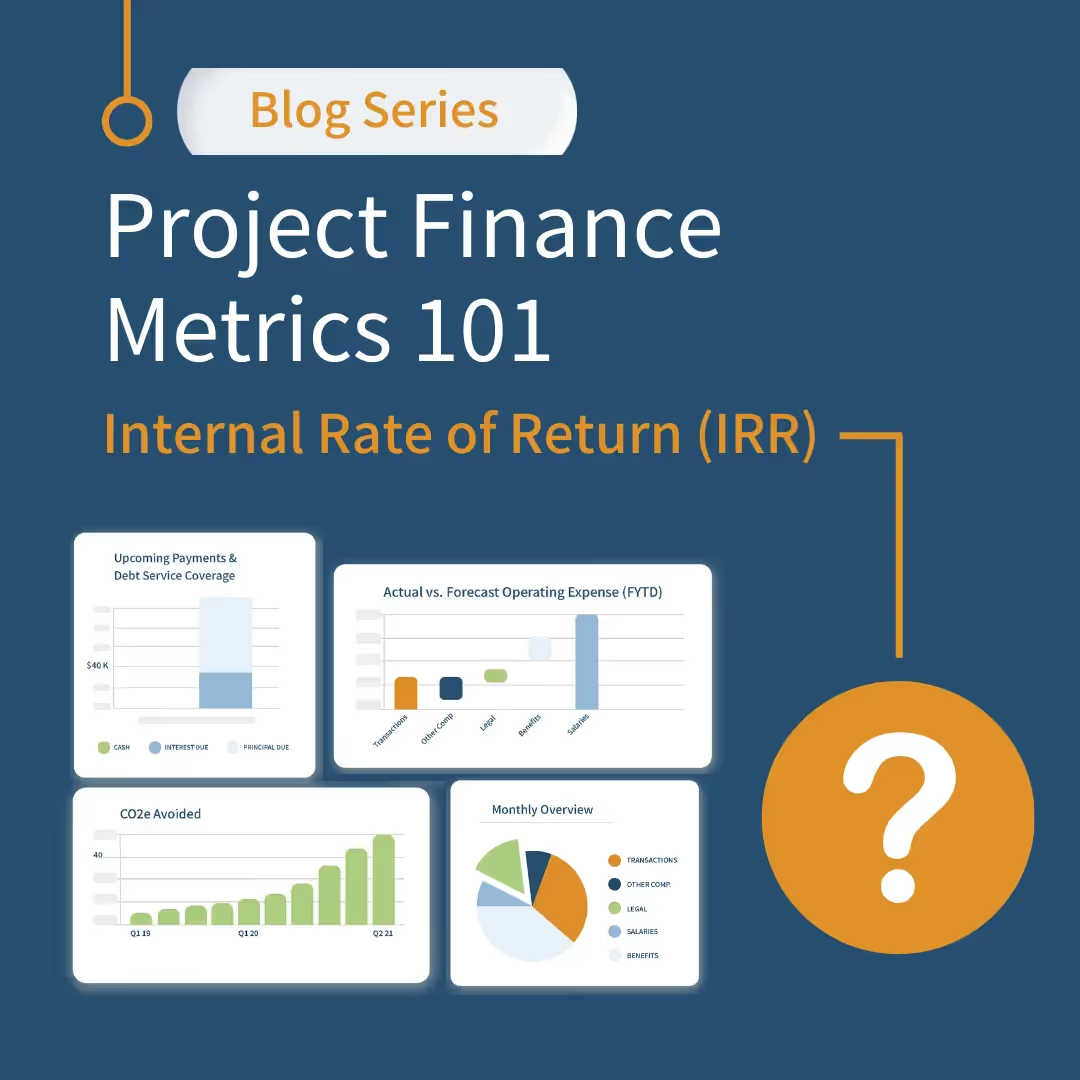Project Finance Metrics 101: Internal Rate of Return

In the world of sustainable project finance, understanding the language of metrics is crucial. These metrics are not just numbers; they narrate the financial story of a project and speak to its viability, risks, and returns. We believe at Banyan Infrastructure that setting up your business to track key metrics from Day 1 is imperative. Tracking key metrics allows you to respond to real time requests, generate insightful reports, make the best decisions, continuously improve your processes, and appropriately manage performance and risk.
In this blog series, we will decode and describe some pivotal metrics in sustainable project finance, beginning with:
Internal Rate of Return (IRR)
When it comes to project finance, the most basic metric by which a project is measured is its Internal Rate of Return, or its IRR. IRR is an objective measure of an investment’s return rate, or rate, that makes the net present value (NPV) of all cash flows from a particular project equal to zero. In simpler terms, IRR is the break-even interest rate that equates the cost of the investment with the present value of expected future cash flows. IRR is a universal gauge of profitability, and it’s possible to look at IRR on both a project and portfolio level.
To compute the Internal Rate of Return (IRR), analysts initially project the anticipated cash flows throughout the project's lifespan, encompassing both inflows and outflows. Subsequently, these cash flows undergo discounting to their present value, employing a discount rate that mirrors the project's cost of capital. The IRR is determined as the rate at which the aggregate of discounted cash flows reaches zero.
When the IRR surpasses the specified rate of return or the project's cost of capital, the investment is deemed appealing and expected to yield positive returns. Conversely, if the IRR falls below the required rate of return, the project is regarded as less attractive and less likely to generate positive returns. One element about IRR that is important to investors is that it incorporates both the timing and magnitude of the project's cash inflows and outflows, therefore factoring in the time value of money through the discounting of future cash flows to their present value.
How to use IRR to make decisions
Benchmarking
- Investors, lenders and project developers often have a minimum acceptable rate of return in mind. IRR provides a clear cut-off point to decide whether to proceed with the investment.
Comparing Projects
- When choosing between multiple projects, IRR offers a straightforward comparison, regardless of the scale of the investment.
Portfolio Roll Ups
- Use IRR to assess the return rate of an entire portfolio by rolling up all the cash flows within it and evaluating the performance of the portfolio as a whole.
However, IRR is not without its pitfalls. It assumes that all project cash flows are reinvested at the IRR itself, which might not always be feasible. Also, it doesn't account for the magnitude of the investment or its duration, nor does it take into account the risk-free rate, inflation, cost of capital, or financial risk.
Although IRR is a powerful modeling tool for measuring profitability, it is just part of a stakeholder’s greater financial toolkit. Wise investors, lenders and project developers look at this metric in conjunction with other financial and non-financial indicators to paint a complete picture of a project's potential.
Follow along to learn more about metrics and software
Metrics provide a holistic view of a project's financial health, and guide stakeholders through the complexities of project finance. While IRR provides a baseline idea of an investment’s profitability, there are other metrics that are just as important to consider. In the next installation of our latest blog series on Project Finance Metrics 101, we’ll dive into Cash Flow Waterfall and explain how it works hand in hand with IRR and the rest of the finance toolkit.
“The Key to Unlocking the Full Potential of the Inflation Reduction Act, Bridging the Sustainable Investment Gap with Automation, Digitization, and Optimization” is the latest white paper from Banyan Infrastructure. It further discusses how technology can alleviate the problems faced by the sustainable infrastructure finance industry so it can take full advantage of the capital unlocked by the IRA. Download it here.